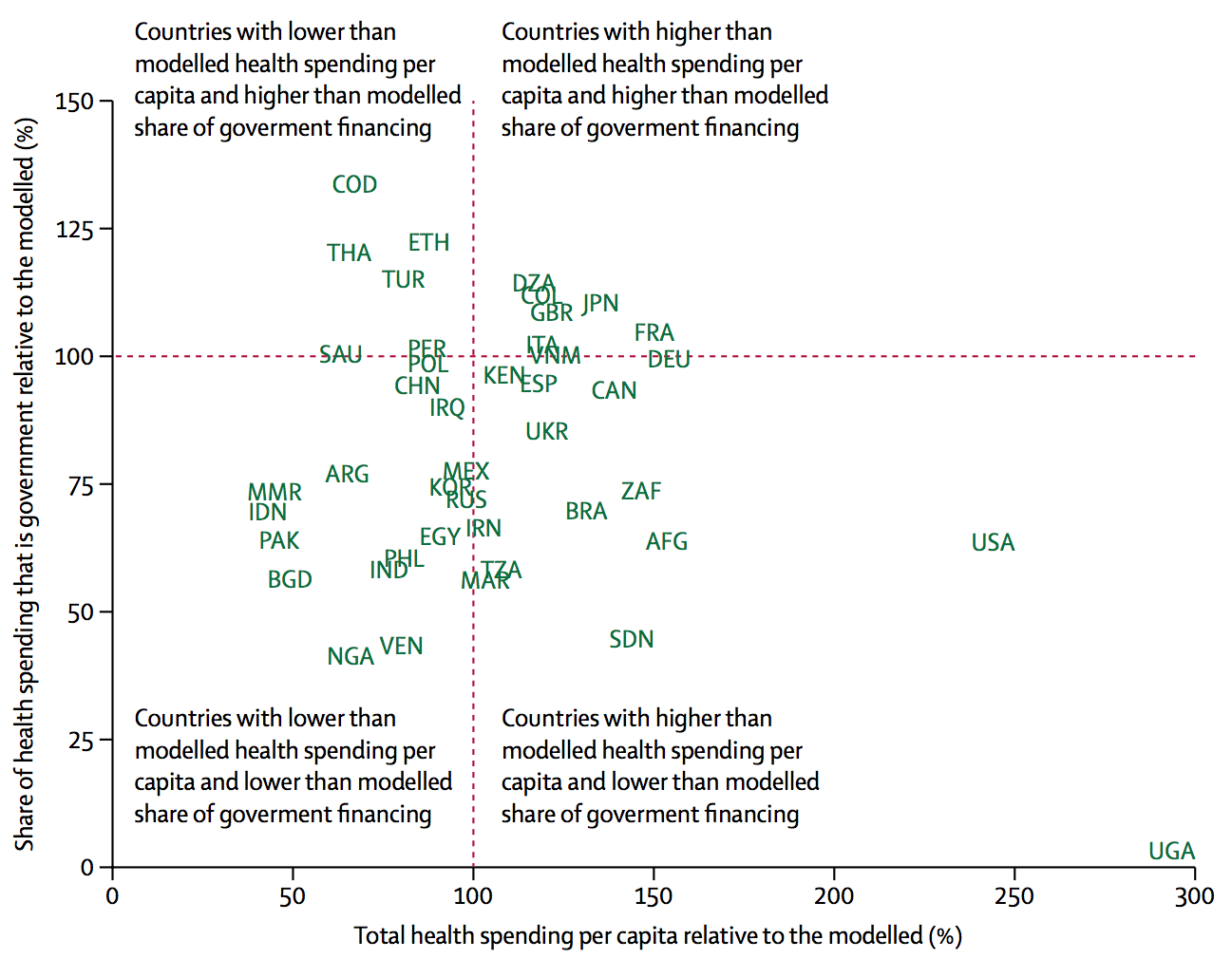Several years after the ACA ("Obamacare") passed, healthcare costs continue to rise in America. The question of why – and, perhaps more importantly, how much of these costs should be covered by the government – continue to spark intense political debate.
New research funded by the Gates Foundation and led by Joseph Dieleman of the University of Washington may shed some light on this issue. The researchers investigated global patterns of healthcare spending, and their results are published in The Lancet.
For their investigation, the team analyzed healthcare spending (which was adjusted for inflation and purchasing power) in 184 countries from 1995 to 2014. Then, they conducted regression analyses, with the general aim of making two broad determinations: (1) Given the size of a nation's economy per capita, what is the expected level of healthcare spending per capita? (2) How much of a country's healthcare costs are covered by the government?
In general, the team found that as nations get richer, citizens spend increasingly more on healthcare. Additionally, a larger percentage of that spending comes from government.
The Peculiarities of U.S. Healthcare
But the team's results also highlighted two peculiar features of healthcare spending in the United States.

The first peculiarity is the amount of money the U.S. spends on healthcare. On a per capita basis, Americans spend 77% more on healthcare than other high-income countries. As a percentage of GDP, healthcare constitutes 1/6 of the U.S. economy, but it constitutes less than 1/8 of the economies of similar nations.
The second peculiarity is how healthcare costs are covered. In the average high-income country, 63% of healthcare spending is covered by the government, whereas less than 50% is covered by the American government. Additionally, prepaid private spending (e.g., insurance) plays a larger role in covering healthcare costs in the U.S. than in other high-income countries. And though out-of-pocket costs (as a percentage) are roughly the same between the U.S. and other similar nations, Americans pay more out-of-pocket due to the high relative cost of healthcare.
A Global Healthcare Spending Model
Using data from all 184 countries, the authors then devised a model of "expected" healthcare spending.

As shown, as countries become wealthier, a larger portion of healthcare is covered by the government.
Next, the authors plotted these nations on a graph (depicting only those with populations above 30 million for simplicity) to show how actual healthcare spending compared to the expected values derived from the model.

Once again, the model shows how out of the mainstream American healthcare is compared to other nations. The U.S. spends more on healthcare per capita (than expected), and the government covers less of these costs (than expected).
Lessons from the Global Healthcare Spending Model
Comparing healthcare in the United States to that of other nations is useful because it provides context as well as hints about how to improve. However, there are limitations of this model to keep in mind.
First, it is tempting to replace the word "expected" with the word "should." Just because the U.S. government covers a smaller fraction of healthcare costs than expected does not necessarily mean it covers a smaller fraction of healthcare costs than it should. Confusing a positive analysis for a normative one is tempting but must be avoided. Second, the model does not account for the quality of healthcare. Third, the model includes all 184 countries, when it would have been better to build a model just for the high-income countries.
Still, this data provides potential insights for policymakers.
Source: Joseph L Dieleman, et al. "Evolution and patterns of global health financing 1995–2014: development assistance for health, and government, prepaid private, and out-of-pocket health spending in 184 countries." Lancet. Published: 19-Apr-2017. DOI: 10.1016/S0140-6736(17)30874-7




